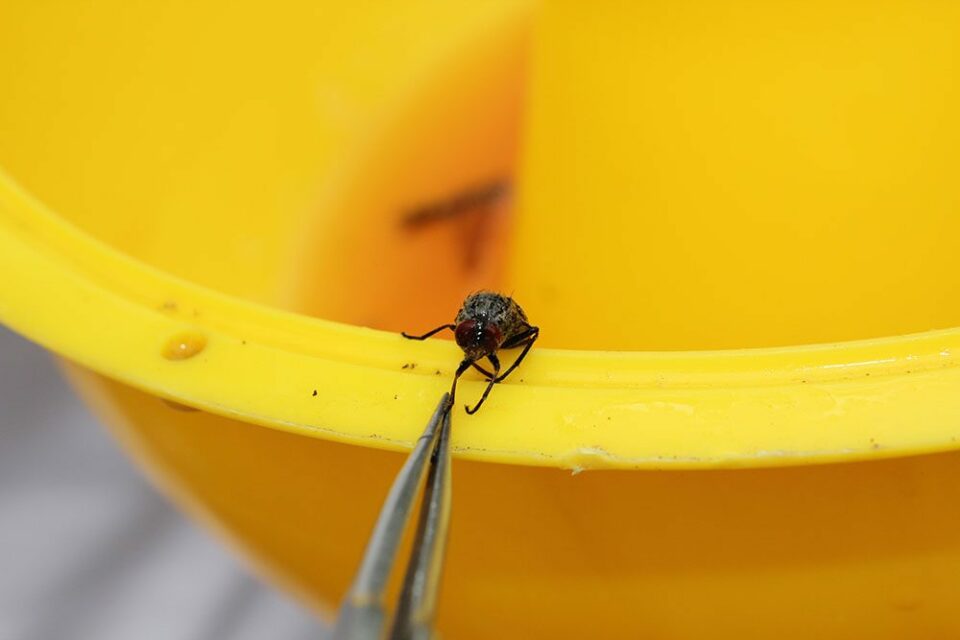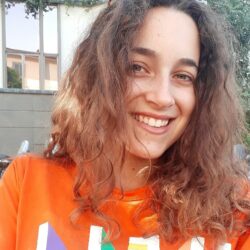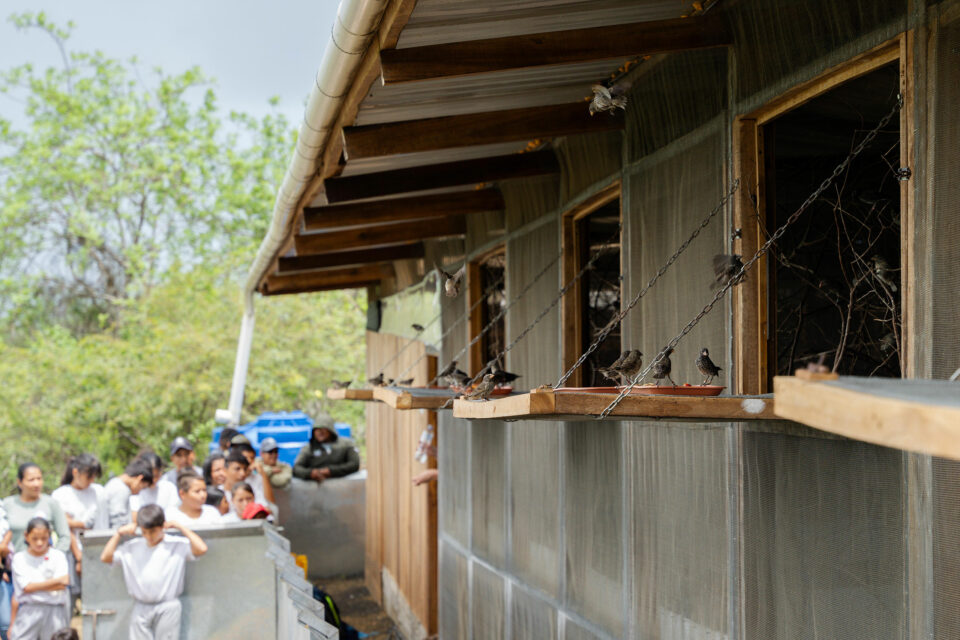

Environmental education on Floreana: Supporting island restoration
We are supporting one of the most complex eradication projects ever conducted on an inhabited tropical island. To succeed, this groundbreaking project requires local residents' involvement.
Located in the south of the Archipelago, Floreana island is the sixth largest island in Galapagos and home to around 140 people. While known for its amazing and rare biodiversity, many native species on Floreana are threatened by invasive and introduced predators, including rats, mice and feral cats, with 12 species already locally extinct.
In an attempt to restore Floreana’s biodiversity, Galapagos Conservation Trust (GCT) is supporting local partners, including the Galapagos National Park Directorate, Fundación Jocotoco, the Charles Darwin Foundation, Island Conservation, Durrell Wildlife Conservation Trust and others, in completing one of the most complex eradication projects ever conducted on an inhabited tropical island. The programme is now in its eradication phase, targeting non-native rats and feral cats. Provided that the eradication has been successful, the third phase will begin in early 2024, consisting of reintroducing 12 species over at least seven years.
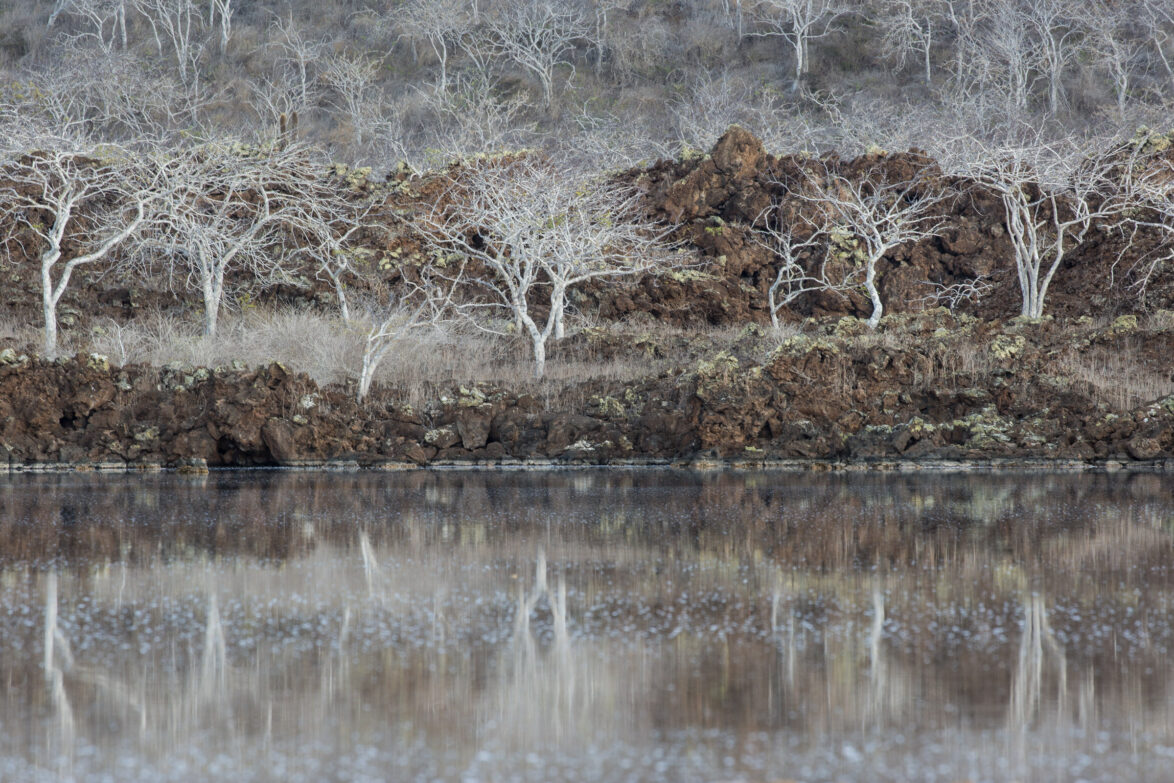
“The residents of Floreana have been instrumental in getting the programme to where it is today, which is why it is important to continue engaging the local community as we move into the project’s next phase”, GCT’s education consultant Sarah Langford explains. “We want to raise awareness amongst young people, both on Floreana and other islands, build on their knowledge of the restoration programme and raise awareness on biosecurity issues and protocols”.
Sarah has utilised her knowledge and skillset as a teacher and educator to develop a plan of action to promote meaningful connections with the natural world among children on Floreana. Using interactive educational resources can make learning an enjoyable and memorable experience and encourage people to take a long-term invested interest in the wildlife around them.
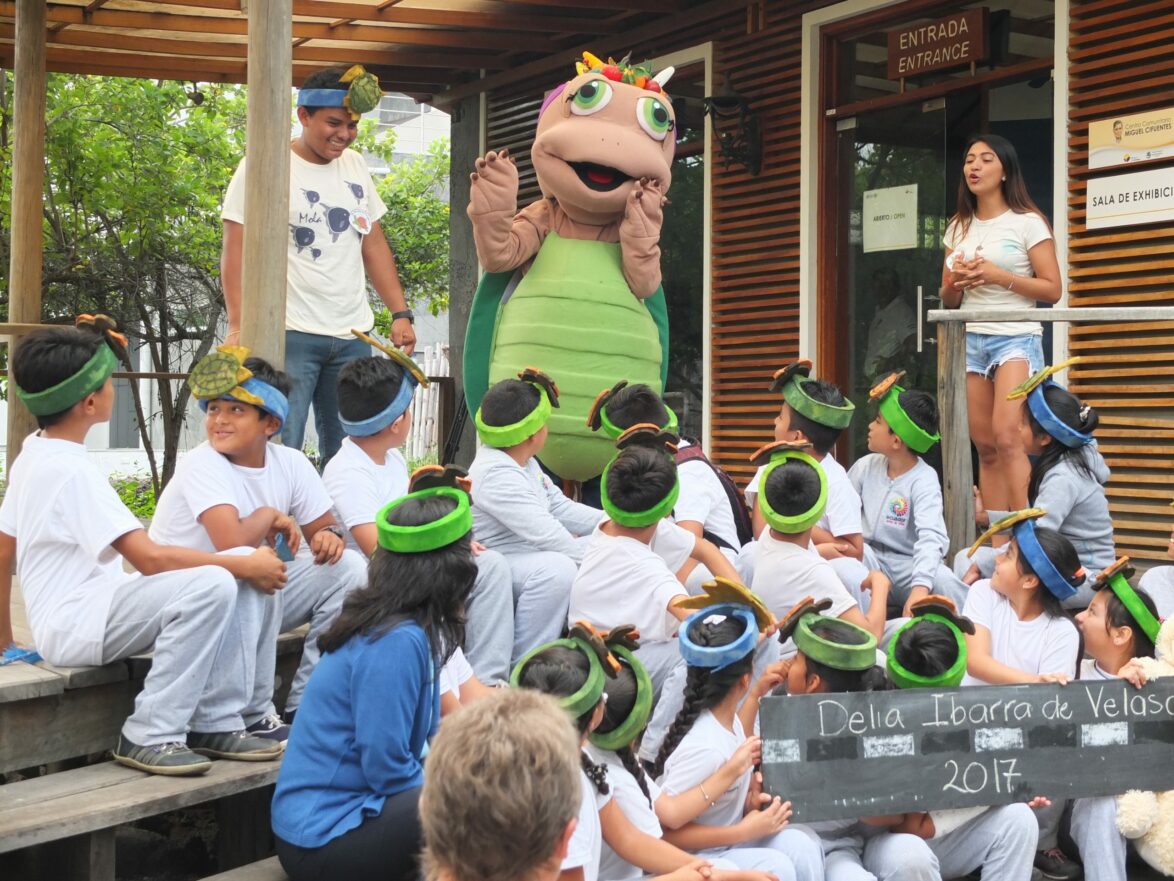

Connecting with Nature
Discover how GCT uses environmental education to foster a love for nature and strong sustainability values
GCT’s plans for educational activities in Floreana follow this experiential learning model, which allows people to learn from direct experiences in nature, thus promoting responsible environmental behaviours. The activity plans, which will be available on our teaching resource platform Descubriendo Galapagos, include a set of interactive educational resources, two of which have been developed recently. These consist of a poster and a ‘Top Trumps’-style cards game, which are aimed at late primary-aged students and will form part of our Floreana education resource pack.
An interactive poster designed by GCT supporter and graphic designer Lisa Brown provides a visual summary of the Restoring Floreana programme. The map highlights Floreana’s different climatic zones, native and introduced species and their conservation status.
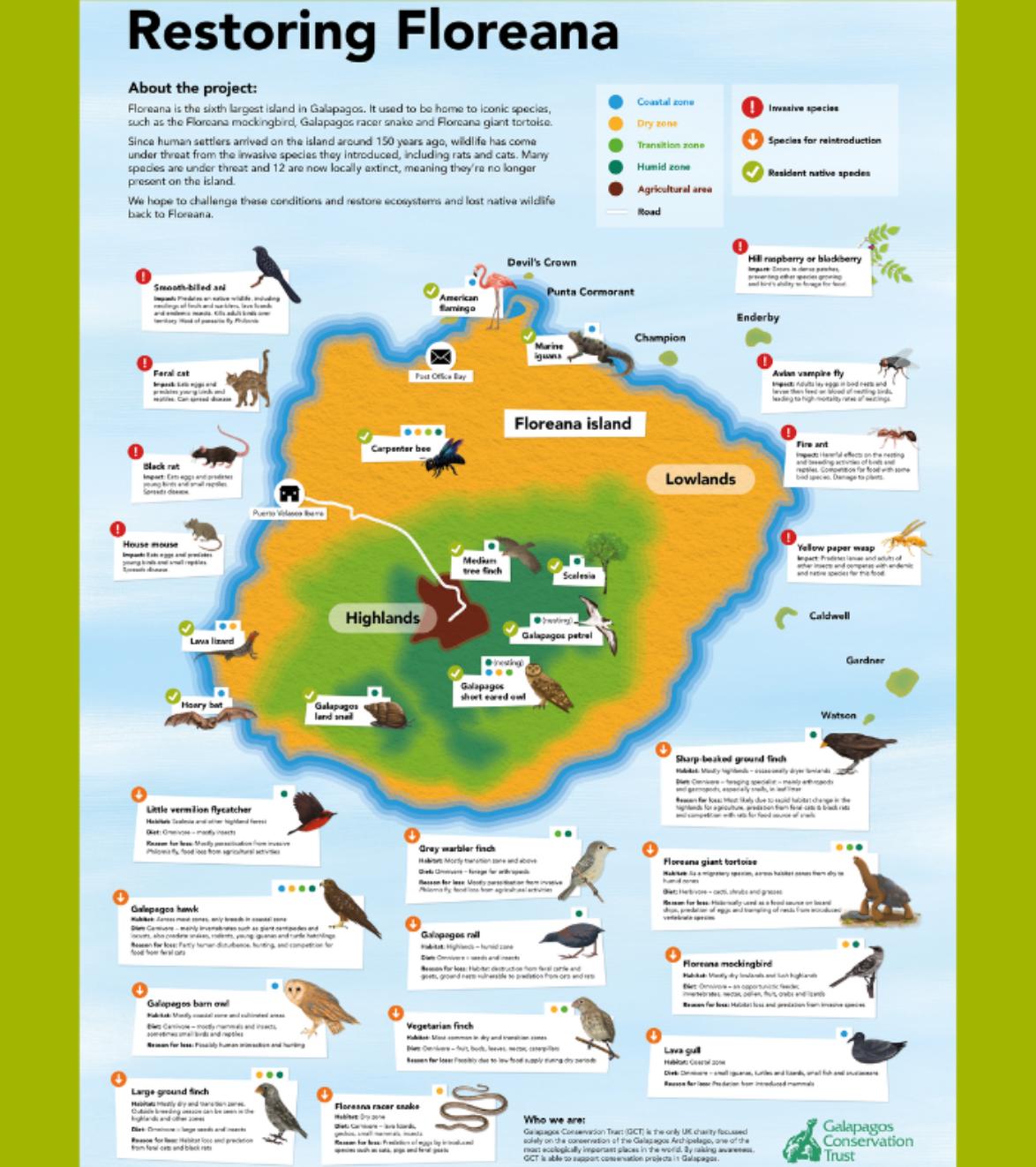
Additionally, we’ve developed a ‘Top Trumps’-style cards game, consisting of a pack of 25 cards representing the 12 species due to be reintroduced, including the Floreana giant tortoise and the Galapagos racer snake, as well as six resident species, including the American flamingo and the Galapagos petrel, and seven invasive species, such as the black rat. Each card includes the average size, weight, lifespan, “last recorded on Floreana” date, and information on the species’ preferred climatic zones.
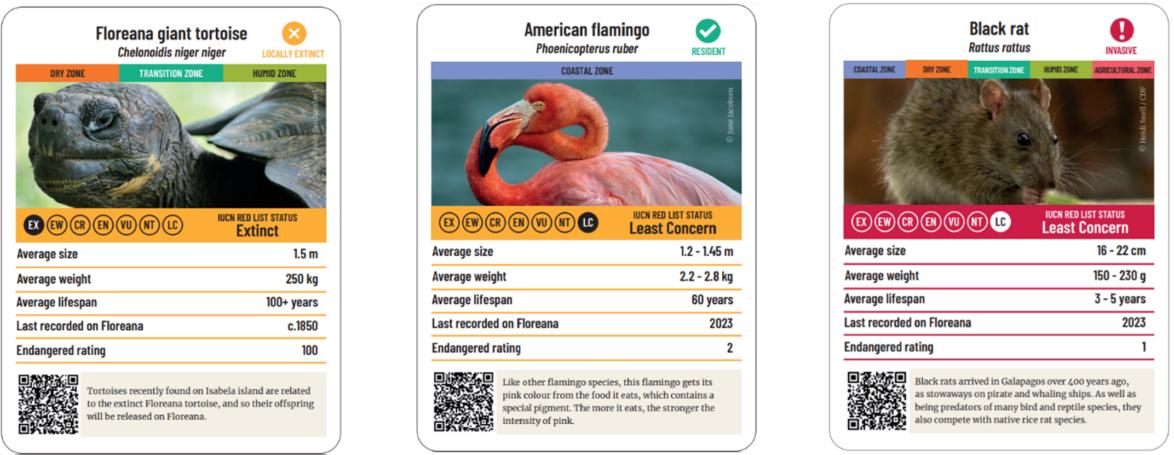
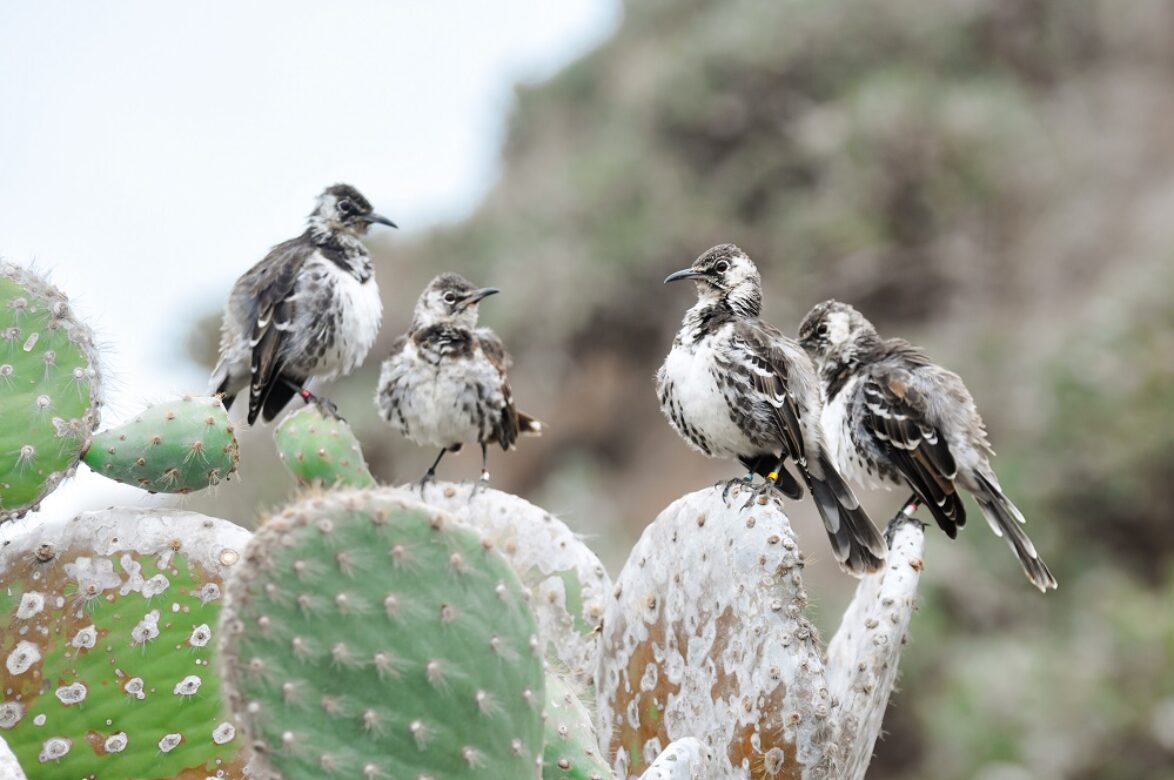
Reintroducing wildlife to Floreana
Learn all about the 12 missing species set to return to Floreana
We were thrilled to be able to showcase ‘work in progress’ versions of the Floreana poster and the card game at Galapagos Day 2023, where we received very positive responses from our supporters. Next, we will translate these resources into Spanish and continue collaborating with our partners across the Islands to develop resources for school and outreach activities. These will be used on Floreana and eventually across the Archipelago to engage other communities and tourists.
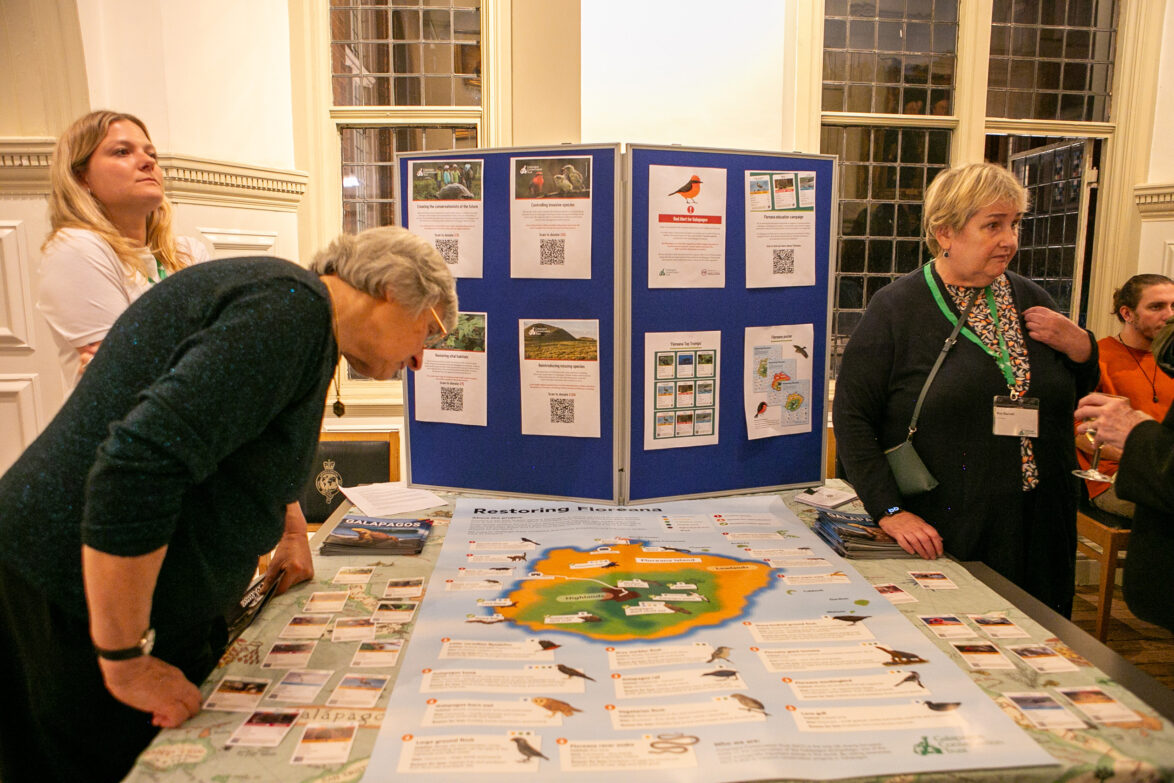
The residents of Floreana have been instrumental in getting the programme to where it is today, which is why it is important to continue engaging the local community as we move into the project’s next phase.
Webinar: Rewilding Floreana
Join us on Thursday 18 April 2024 to hear the latest on the restoration of Floreana, with Jeff Dawson of Durrell Wildlife Conservation Trust reporting back from his recent trip to the island.
Related articles

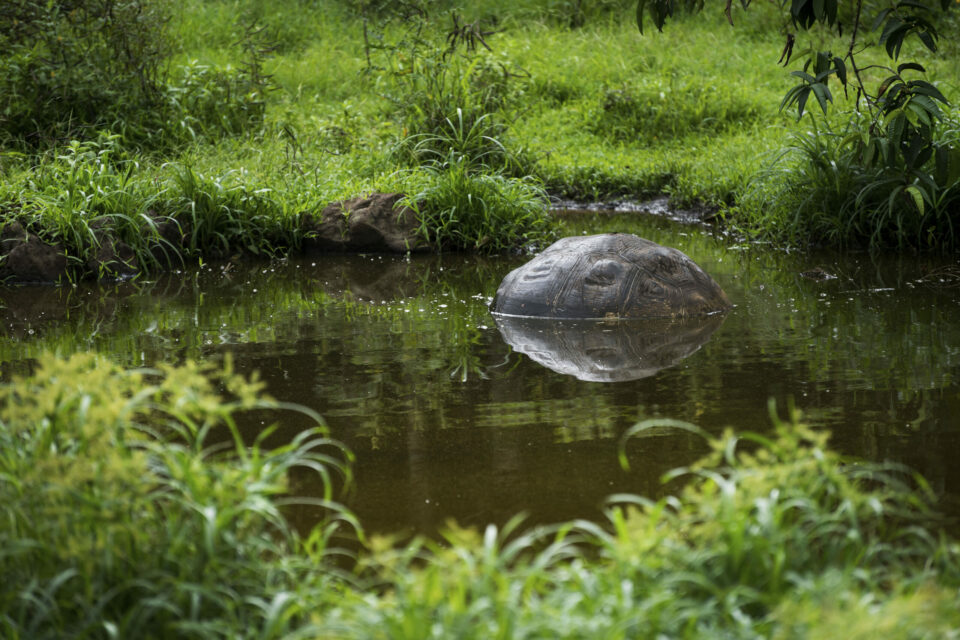
Double your donation to rewild Galapagos with the Big Give

The return of the Floreana giant tortoise
